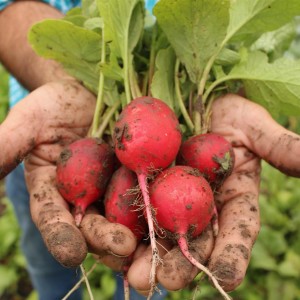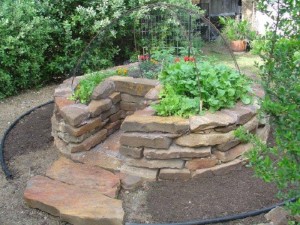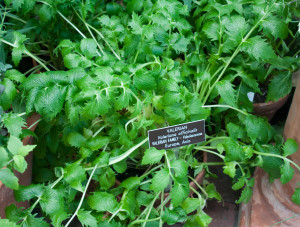Koen King Stokes of Veg’d Out Urban Farms, a new urban farm just 15 minutes south of downtown San Antonio that grows using organic and sustainable practices is trying to prove that putting plants in the ground can be, not only functional, but pretty darn easy.
“If you’re wanting to connect with nature again, you don’t have to go to a park to do it. You can put the essence of nature in your yard. Not only can it be less maintenance than your turf, it can also be productive, as long as you know what to put in the ground and when,” said Koen, who offered a few easy tips.
Kill Your Grass
This might sound a little scary at first, but according to Koen, grass is the #1 weed for urban farms, and completely useless. “I know it’s radical, but I like being radical,” he said. You can kill your grass either quickly or passively. He recommends getting a digging fork or broad fork to break up and aerate the soil afterwards, so that the roots of the new plants can breathe. You want to go down about 6-8 inches.
Learn Your Landscape
This is nothing more than simple observation. Study your planting area. Where are the shady spots? Which spots get the most sun? “These are called microclimates,” said Koen. You might find a section that’s already sheltered from a northern wind. If you’re going to plant something more susceptible to frost, for example, you’ll want to put it on a Southeasterly exposure. “That’s why I have bananas and lemons over here and not over there,” he explained.
Make Mulch Your Friend
Koen encourages any interested urban farmers to fall in love with compost and mulch. “When you apply compost to any soil, it brings it back to a conducive environment for plant growth,” he noted. When you apply mulch on top of compost it helps to maintain that environment. Mulch, which can be made up of anything from leaves to wood chips, pine needles and coffee grounds, is a shelter for compost.
What & When to Plant
You know what vegetables and herbs you like to eat, right? The big questions are if the things you like to eat will grow well in a South Texas climate, and what season is best to plant in. Koen suggests starting with something simple like perennial herbs which, once established, can go virtually unattended. He likes thyme, oregano and mint varieties, although he’s currently growing about 50 different kinds of herbs. Herbs can also be as decorative as they are delicious, therefore a great introduction for a new urban farmer. Koen recommends shopping at Fanick’s or Shades of Green to get your herbs and other plants. He also suggests exploring online resources for more information, such as Texas A&M’s planting calendar.
However, if you prefer to just eat the veggies and herbs, rather than grow them, you can check out Veg’d Out Urban Farm’s delicious produce on Sundays at the Pearl Farmer’s Market. If you need a beautiful dream home to build an urban farm around, just give us a call at 210-494-5400.


